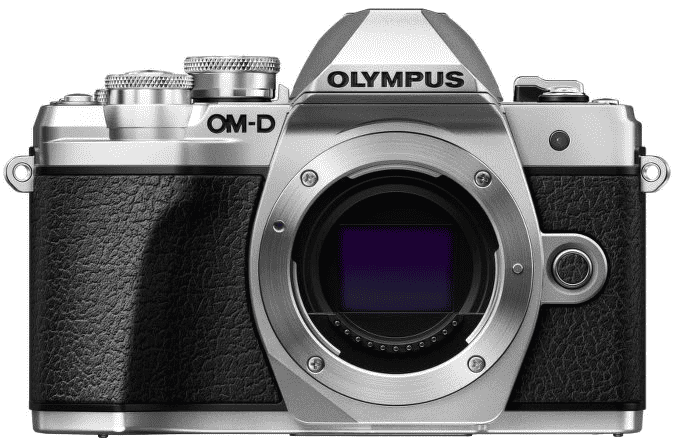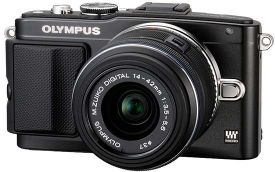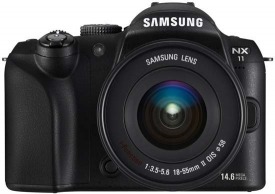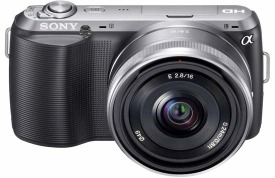EVF or OVF?
22nd December 2019In photography, some developments are passing fads while others bring longer lasting changes. In their own way, special effects filters and high dynamic range techniques cause their share of excitement before that passed and their usage became more sensible. In fact, the same might be said for most forms of image processing because tastefulness eventually gets things in order. Equally, there are others that mark bigger shifts.
The biggest example of the latter is the move away from film photography to digital image capture. There still are film photographers but they largely depend on older cameras since very few are made any more. My own transition came later than others but I hardly use film any more and a lack of replacement parts for cameras that are more than fifteen years old only helps to keep things that way. Another truth is that digital photography makes me look at my images more critically and that helps for some continued improvement.
Also, mobile phone cameras have become so capable that the compact camera market has shrunk dramatically. In fact, I gave away my Canon PowerShot G11 earlier this year because there was little justification in hanging onto it. After all, it dated back to 2010 and a phone would do now what it once did though the G11 did more for me than I might have expected. Until 2017, my only photos of Swedish locations were made with that camera. If I ever was emotional at its departure and I doubt that I was, that is not felt now.
If you read photography magazines, you get the sense that mirrorless cameras have captured a lot of the limelight and that especially is the case with the introduction of full frame models. Some writers even are writing off the chances of SLR’s remaining in production though available model ranges remain extensive in spite of the new interlopers. Whatever about the departure of film, the possible loss of SLR’s with their bright optical viewfinders (OVF’s) does make me a little emotional since they were the cameras that so many like me aspired to owning during my younger years and the type has served me well over the decades.

Even so, I too have used mirrorless cameras and an Olympus PEN E-PL5 came into my possession in 2013. However, I found that using the screen on the back of a camera was not to my liking and the quality of mobile phone cameras is such that I no longer need any added portability. However, it needs to be remembered that using a Tamron 14 to 150 mm zoom lens with the body cannot have helped either. Wishing to sample a counterpart with an electronic view finder, I replaced it with an Olympus OM-D E-M10 Mark III earlier this year and have been getting on fine with that.
The body certainly is a compact one but the handling is very like an SLR and I have turned off the automatic switching between viewfinder and screen since I found it distracting; manually switching between the two is my preference. As it happens, using the EVF took a little acclimatisation but being able to add a spirit level overlay proved to as useful as it was instructive. The resulting images may be strong in the green and blue ends of the visible spectrum but that suits a user that is partial to both colours anyway. It also helps that the 16.1 megapixel sensor creates compact images that are quick to upload to a backup service. There have been no issues working with my Tamron lens and keeping that was a deciding factor in my remaining with Olympus in spite of a shutter failure with the older camera. That was fixed efficiently and at a reasonable cost too.
As good as the new Olympus has been, it has not displaced my existing Canon EOS 5D Mark II and Pentax K5 II SLR’s. The frame size is much smaller anyway and January saw me acquire a new Sigma 24 to 105 mm zoom lens for the former after an older lens developed an irreparable fault. The new lens is working as expected and the sharpness of any resulting images is impressive. However, the full frame combination is weighty even if I do use it handheld so that means that the Pentax remains my choice for overseas trips. There also is an added brightness in the viewfinders of both cameras that I appreciate so the OM-D complements the others rather than replacing them.
While I can get on with EVF’s if SLR’s ever get totally superseded, I am planning to stick mainly with SLR’s for now. Interestingly, Canon has launched a new enthusiast model so there must be some continuing interest in them. Also, it seems that Canon foresees a hybrid approach where live viewing using the screen on the back of the camera may add faster autofocus or other kinds of functionality while the OVF allows more traditional working. That of itself makes me wonder if we might see cameras that can switch between EVF and OVF modes within the same viewfinder. The thought may be as far fetched as it is intriguing yet there may be other possibilities that have not been foreseen. One thing is clear though: we are in an age of accelerating change.
A Look at a Compact System Camera
4th September 2013During August, I acquired an Olympus Pen E-PL5 and it is an item to which I still am becoming accustomed and it looks as if that is set to continue. The main reason that it appealed to me was the idea of having a camera with much of the functionality of an SLR but with many of the dimensions of a compact camera. In that way, it was a step up from my Canon PowerShot G11 without carrying around something that was too bulky.

Before I settled on the E-PL5, I had been looking at Canon’s EOS M and got to hear about its sluggish autofocus. That it had no mode dial on its top plate was another consideration though it does pack in an APS-C sized sensor (with Canon’s tendency to overexpose finding a little favour with me too on inspection of images from an well aged Canon EOS 10D) at a not so unappealing price of around £399. A sighting of a group of it and similar cameras in Practical Photography was enough to land that particular issue into my possession and they liked the similarly priced Olympus Pen E-PM2 more than the Canon. Though it was a Panasonic that won top honours in that test, I was intrigued enough by the Olympus option that I had a further look. Unlike the E-PM2 and the EOS M, the E-PL5 does have a mode dial on its top plate and an extra grip so that got my vote even it meant paying a little extra for it. There was a time when Olympus Pen models attracted my attention before now due to sale prices but this investment goes beyond that opportunism.
The E-PL5 comes in three colours: black, silver and white. Though I have a tendency to go for black when buying cameras, it was the silver option that took my fancy this time around for the sake of a spot of variety. The body itself is a very compact affair so it is the lens that takes up the most of the bulk. The standard 14-42 mm zoom ensures that this is not a camera for a shirt pocket and I got a black Lowepro Apex 100 AW case for it; the case fits snugly around the camera, so much so that I was left wondering if I should have gone for a bigger one but it’s been working out fine anyway. The other accessory that I added was a 37 mm Hoya HMC UV filter so that the lens doesn’t get too knocked about while I have the camera with me on an outing of one sort or another, especially when its plastic construction protrudes a lot further than I was expecting and doesn’t retract fully into its housing like some Sigma lenses that I use.
When I first gave the camera a test run, I had to work out how best to hold it. After all, the powered zoom and autofocus on my Canon PowerShot G11 made that camera more intuitive to hold and it has been similar for any SLR that I have used. Having to work a zoom lens while holding a dinky body was fiddly at first until I worked out how to use my right thumb to keep the body steady (the thumb grip on the back of the camera is curved to hold a thumb in a vertical position) while the left hand adjusted the lens freely. Having an electronic viewfinder instead of using the screen would have made life a little easier but they are not cheap and I already had spent enough money.
The next task after working out how to hold the camera was to acclimatise myself to the exposure characteristics of the camera. In my experience so far, it appears to err on the side of overexposure. Because I had set it to store images as raw (ORF) files, this could be sorted later but I prefer to have a greater sense of control while at the photo capture stage. Until now, I have not found a spot or partial metering button like what I would have on an SLR or my G11. That has meant either using exposure compensation to go along with my preferred choice of aperture priority mode or go with fully manual exposure. Other modes are available and they should be familiar to any SLR user (shutter priority, program, automatic, etc.). Currently, I am using bracketing while finding my feet after setting the ISO setting to 400, increasing the brightness of the screen and adding histograms to the playback views. With my hold on the camera growing more secure, using the dial to change exposure settings such as aperture (f/16 remains a favourite of mine in spite what others may think given the size of a micro four thirds sensor) and compensation while keeping the scene exactly the same to test out what the response to any changes might be.
While I still am finding my feet, I am seeing some pleasing results so far that encourage me to keep going; some remind me of my Pentax K10D. The E-PL5 certainly is slower to use than the G11 but that often can be a good thing when it comes to photography. That it forces a little relaxation in this often hectic world is another advantage. The G11 is having a quieter time at the moment and any episodes of sunshine offer useful opportunities for further experimentation and acclimatisation too. So far, my entry in the world of compact system cameras has revealed them to be of a very different form to those of compact fixed lens cameras or SLR’s. Neither truly get replaced and another type of camera has emerged.
Three gone…
11th January 2013As of today, Jessops no longer continues to trade. It is but a third specialist purveyor of photographic equipment to go this way. Jacobs, another Leicester headquartered competitor, met the same fate as did the Wildings chain in the northwest of England. These were smaller operations than Jessops who may have overreached itself during the boom years and certainly had their share of financial troubles in recent times, the latest of which putting an end from the operation.
Many are pondering what is happening and the temptation is to blame the rise of the e-commerce and the economic situation for all of this. In addition, I have seen poor service blamed. However, where are we going to go now after this? Has photography become such a specialised market that you need a diversified business to stick with it? After all, independent retailers have been taking a hammering too and some have gone out of business like the chains that I have mentioned here.
It does raise the question as to where folk engaging in a photographic purchase are going to go for advice now; is the web sufficiently beginner friendly? There seemingly are going to be less bricks and mortar shops out there now so coming across one-to-one advice as once would have been the case is looking harder than it once was. Photographic magazines will help and the web has a big role to play too. It certainly informed some of my previous purchases but I have been that little bit more serious about my photography for a while now.
It might be that photography is becoming more specialist again after a period when the advent of digital cameras caused an explosion in interest. Cameras on mobile phones are becoming ever more capable and cannibalising the compact camera market for those only interested in point and shoot machinery. Maybe that is where things are going in that mass market photography doesn’t offer the future that it once might have done given the speed of technological advance. The future and present undoubtedly are about as interesting as they have become utterly uncertain.
Thinking over the last ten years or so, there has been a lot of change and that seems set to continue even if I am left wondering if photography has shot its bolt by now. My first SLR came from a Stockport branch of Jessops and was a film camera, a Canon EOS SLR. It certainly got me going and was exchanged for a Canon EOS 30 from Ffordes, an internet transaction during which the phone system around Manchester and Cheshire went on the blink. That outage may have exposed a frailty of our networked world but there has been no fire to melt cables in a tunnel since then. Further items from Jessops came via the same channel such as a Manfrotto 055 tripod and my Pentax K10D. A Canon-fit 28-135 mm Sigma came from Jessops’ then Manchester Deansgate store and another Canon-fit Sigma lens, a 70-300 mm telephoto affair, came from another branch of the chain, although not the Macclesfield branch since that had yet to be established and there’s no photographic store left in the town now after the Jessops and Wildings closures.
Those purchases have become history just like the photographic retail chain from which they were sourced. These days, I am more than comfortable in making dealings over the web but that concern about those starting out that I expressed earlier now remains. Seeing how that would work is set to become interesting. Might it limit the take up of photography on a more serious basis? That is a question that could get a very interesting answer as we continue into ever more uncertain times.
Dispensing with temptation
26th January 2012The compact system camera arena is a burgeoning one with many manufacturers having followed Olympus into the fray. In latter months of last year, Nikon finally took the plunge though Canon have yet to do the same. Seeing offers on Olympus E-PL1 kits with a 14-42 mm zoom lens had me tempted, particularly with a price tag of the order of £250. In fact, I even got to looking into the competition too and a shortlist emerged. This also featured the Samsung NX-11 and the Sony NEX-C3 as well as the big brother of the latter, the NEX-5N.

What eventually countered the allure of shiny objects was the question as to why I needed such an item. After all, I already possess a Pentax K10D DSLR and a Canon Powershot G11 and these have been satisfying my photographic needs for a while now. The DSLR may date from 2007 but it is still working well for me and, if it ever needed replacing, I’d be going for another Pentax with the K-5 being a strong contender. The Canon is doing what’s asked of it so the recent launching of the G1 X isn’t so tempting either.
The whole dalliance has me wondering about how photographic equipment changeovers come about. After all, it was around a decade ago with the DSLR revolution was in the offing if not in progress. Until then, film photography was predominant but it looks as if it got as far as it could from a technological point of view when I look back at what happened. The digital photography area was new and untapped so moving there offered new possibilities and purchases more easily justified. The end result is that very few film cameras are being made nowadays. Ironically, it’s film photography that now is untrammelled terrain for many and it is holding its own too in an era when digital photography predominates.
The same sort of newness that came with digital photography also applies to CSC‘s to a certain extent. From the heritage of half-frame 35 mm film photography, Olympus has fashioned a different type of digital camera: essentially a compact with interchangeable lenses. Was it the fact that I have no CSC that caused me to be tempted and has it happened to others too? Also, is that what got digital photography going in the first place?
It almost feels as if camera manufacturers have to keep bringing to market new models and new types of camera in order to stay in business. After all, Minolta had to sell its camera division to Sony when they failed to get going in the DSLR market quickly enough. The same thing might have happened to Pentax too with the marque passing to first to Hoya, and then to Ricoh after the firm lost its independence.
What doesn’t help is the lack of longevity of camera models. The coming of digital photography has exacerbated this situated with models being launched at a frenetic rate. In the days of film photography, a model could last on the market for a few years and there was once a time when a twenty year lifetime wouldn’t have looked so ridiculous though there were incremental improvements made over that time too. For instance, a Pentax K1000 wouldn’t be exactly the same at the end of its production run as it was at the start though the model number may be the same. That world is gone.
Camera types have done better with the SLR design lasting around 50 years so far. However, mirror-less camera technology is adding pressure like never before. Even compact cameras allow live TTL type viewing and Olympus dug into its film camera heritage to add an interchangeable lens mount to give us the first E-P1. The original PEN cameras were half-frame 35 mm affairs and, appropriately enough, their descendants have small sensors in the micro four thirds mould. Then, there’s Sony’s efforts with translucent mirrors that do not move like their SLR counterparts. Canon tried this in the 1980’s with film cameras but never pursued the genre. After that, there are mirror-less SLR-style cameras from Samsung and Panasonic that make you wonder if a full size equivalent is in the offing with live viewing and an electronic viewfinder. Olympus is doing a teaser advertising campaign at the moment and it has some wondering if an OM-D is in the offing.

In parallel with all this, Sony is making a good impression with their CSC’s, the NEX series. These have APS-C sized sensors like many DSLR’s and in compact bodies as well. However, the feel very much is that of a compact camera and some have complained of a like of buttons on them though the photographic quality is very good. Samsung have gone for the same sensor size in their NX-11 thought they have gone for SLR styling. That may be more suitable for some than having to find settings buried in menus.
In summary, we are in an exciting if unnerving time in camera technology at the moment. On one hand, we are seeing a great deal of miniaturisation and what formerly were still cameras can do movie making as well. The latter may not be an interest of mine and it looks like a time-consuming hobby too. A lot is in flux right now and a recent court case reminded us of the difficulties in doing original work these days with image processing in Photoshop forming the basis of a victorious copyright claim. Because the number of images that are getting created everywhere, it could be hard for some to avoid this one and that could be exacerbated if the government changes the law so that intellectual property claims can be processed in the small claims courts. That sort of thing makes film photography seem attractive and it does seem that it isn’t disappearing either, even if Kodak has its financial problems. Novelty seems to change photographic tastes and it seems that film photography is novel again. It’s a changing world and who knows where it take us. Maybe a new DSLR body might make a good purchase in case CSC’s usurp their place entirely. Photographic technology is interesting yet again.
A tendency for overexposure?
14th July 2010A recent trip to Sweden saw my Canon PowerShot G11 being put to rather more use than was expected. If I had known what might have been coming my way, I may even have eschewed the principle of lightweight packing to bring along my Pentax DSLR. Nevertheless, the little Canon did what ever was asked of it when light was plentiful.
Once thing that I have noticed in comparison with the Pentax is the Canon’s tendency to overexpose a scene. To a point, this can be explained by the former having proper spot-metering and the latter having the less specific partial metering. In fact, that might explain why a Canon EOS 10D SLR in my possession has the same tendency. Maybe it’s time to make more use of the Sekonic light meter that I have but that adds bulk that doesn’t fit in with the idea of carrying a compact camera around with you.
That leaves getting more practice with exposure corrections at processing time (I do capture all my photos in raw format). Going further, I am finding that the same consideration appears to apply to image sharpening too. It’s almost as if you need to develop a feeling for the results produced by a camera before satisfaction with any acquired photos will follow. Having decent lighting at capture time and not having muck on the sensor helps too as I have discovered with the photos made used my Pentax K10D on a recent visit to Arran and Argyll. The state of the sensor needs sorting (even if it has an anti-dust system on board) but I sometimes wonder if my judgement of lighting is what it used to be or whether my aspirations have gone too high. Maybe I need to slow down a little so as to set aside time for working on getting better results and with the right light, a quantity that should come with autumn and winter. In the meantime, I’ll stick with making the best of the British summer.